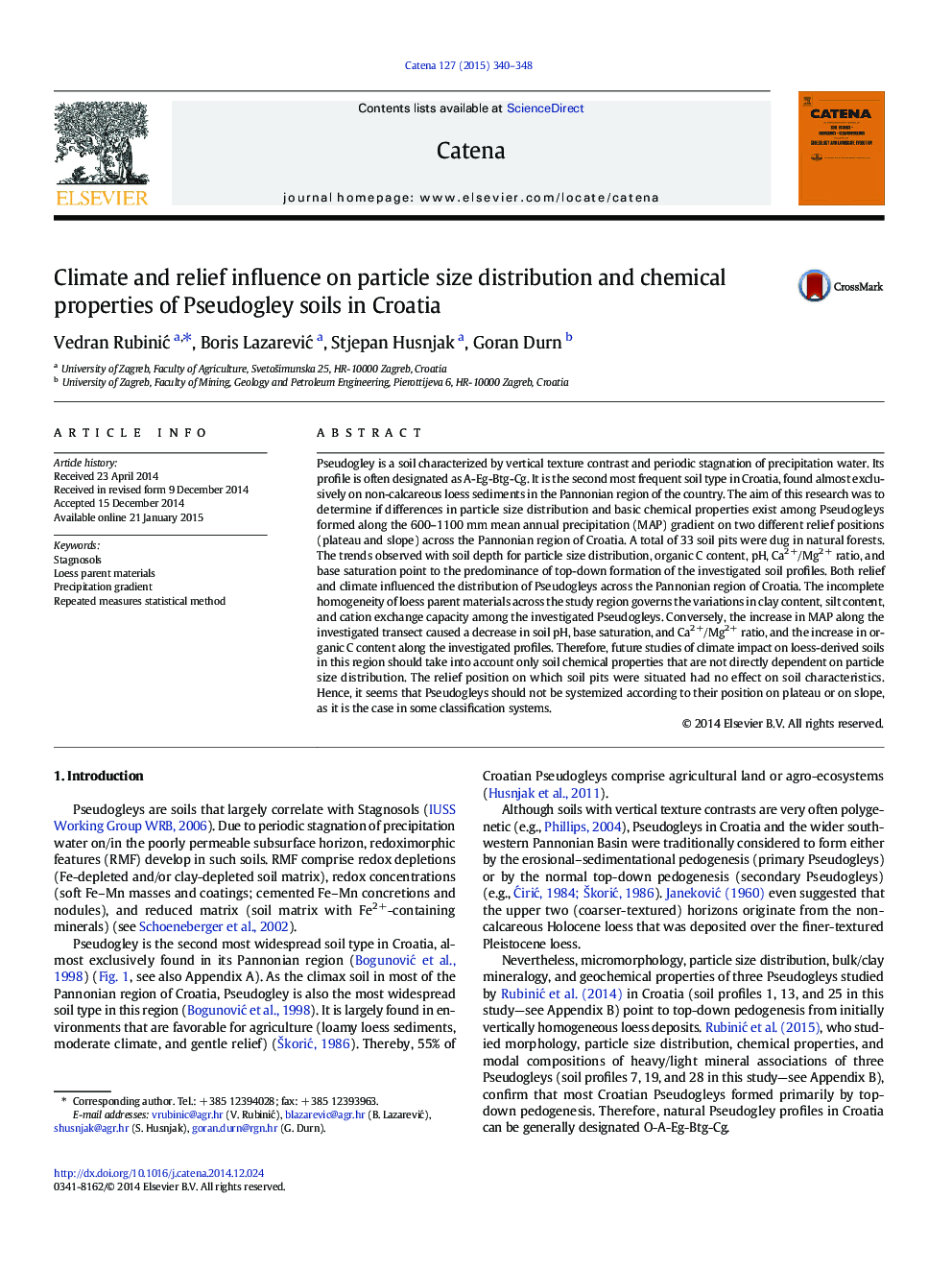| Article ID | Journal | Published Year | Pages | File Type |
|---|---|---|---|---|
| 4571235 | CATENA | 2015 | 9 Pages |
•Loess parent materials across the studied region are only partly homogeneous.•Climate and relief are key factors of Pseudogley distribution in the studied region.•Climate influenced pH, base saturation and C content of the analyzed soil profiles.•Relief position had a negligible impact on the analyzed soil characteristics.
Pseudogley is a soil characterized by vertical texture contrast and periodic stagnation of precipitation water. Its profile is often designated as A-Eg-Btg-Cg. It is the second most frequent soil type in Croatia, found almost exclusively on non-calcareous loess sediments in the Pannonian region of the country. The aim of this research was to determine if differences in particle size distribution and basic chemical properties exist among Pseudogleys formed along the 600–1100 mm mean annual precipitation (MAP) gradient on two different relief positions (plateau and slope) across the Pannonian region of Croatia. A total of 33 soil pits were dug in natural forests. The trends observed with soil depth for particle size distribution, organic C content, pH, Ca2 +/Mg2 + ratio, and base saturation point to the predominance of top-down formation of the investigated soil profiles. Both relief and climate influenced the distribution of Pseudogleys across the Pannonian region of Croatia. The incomplete homogeneity of loess parent materials across the study region governs the variations in clay content, silt content, and cation exchange capacity among the investigated Pseudogleys. Conversely, the increase in MAP along the investigated transect caused a decrease in soil pH, base saturation, and Ca2 +/Mg2 + ratio, and the increase in organic C content along the investigated profiles. Therefore, future studies of climate impact on loess-derived soils in this region should take into account only soil chemical properties that are not directly dependent on particle size distribution. The relief position on which soil pits were situated had no effect on soil characteristics. Hence, it seems that Pseudogleys should not be systemized according to their position on plateau or on slope, as it is the case in some classification systems.
